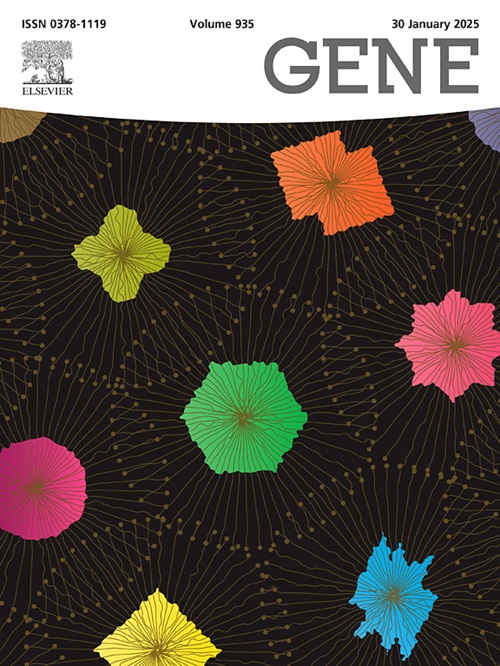TSH inhibits osteoclast differentiation through AMPK signaling pathway
IF 2.6
3区 生物学
Q2 GENETICS & HEREDITY
引用次数: 0
Abstract
Purpose
It is believed that osteoporosis (OP) is associated with hyperthyroidism as a result of the elevation in thyroxine levels. However, patients with subclinical hyperthyroidism, which is characterized by decreased levels of thyroid-stimulating hormone (TSH) alone, are at equal risk of osteoporosis. Research has shown that TSH receptor (TSHR) is expressed on osteoclasts, but whether TSH directly regulates osteoclasts and the underlying mechanisms remain unclear.
Methods
In this study, we used osteoclast precursor cell conditional TSHR-knockout (TSHR CKO) mouse to study the effects of TSHR knockout on bone metabolism in mice and the changes in osteoclast differentiation in vitro. Transcriptomics was used to identify differentially expressed genes and signaling pathways.
Results
In vitro, experiments confirmed that TSH inhibited osteoclast differentiation in mouse RAW264.7 monocyte/macrophage cell line and targeted the key signaling pathway AMPK by RNA-seq sequencing. We found TSHR CKO mice exhibited decreased femoral biomechanics and damaged bone microstructure. The serum levels of bone resorption marker were increased, accompanied by an increase in the number of osteoclasts.
Conclusion
TSH inhibits osteoclast differentiation by activating the AMPK signaling pathway, and exerts an osteoprotective effect. This study will provide guidance for the diagnosis and treatment of osteoporosis. TSH structural analogs or AMPK activators are expected to provide new ideas for the development of drugs to prevent and treat osteoporosis.
TSH通过AMPK信号通路抑制破骨细胞分化
目的认为骨质疏松症(osteoporosis, OP)与甲状腺机能亢进有关,是由于甲状腺素水平升高所致。然而,亚临床甲状腺功能亢进患者,其特征是单独的促甲状腺激素(TSH)水平下降,骨质疏松症的风险相同。研究表明,TSH受体(TSHR)在破骨细胞上表达,但TSH是否直接调控破骨细胞及其机制尚不清楚。方法本研究采用破骨细胞前体细胞条件TSHR敲除(TSHR CKO)小鼠,研究TSHR敲除对小鼠骨代谢的影响及体外破骨细胞分化的变化。转录组学用于鉴定差异表达基因和信号通路。结果体外实验证实,TSH可抑制小鼠RAW264.7单核/巨噬细胞的破骨细胞分化,并通过RNA-seq测序靶向关键信号通路AMPK。我们发现TSHR CKO小鼠表现出股骨生物力学降低和骨微观结构损伤。血清骨吸收标志物水平升高,破骨细胞数量增加。结论tsh通过激活AMPK信号通路抑制破骨细胞分化,具有保护骨的作用。本研究将为骨质疏松症的诊断和治疗提供指导。TSH结构类似物或AMPK激活剂有望为预防和治疗骨质疏松症的药物开发提供新的思路。
本文章由计算机程序翻译,如有差异,请以英文原文为准。
求助全文
约1分钟内获得全文
求助全文
来源期刊

Gene
生物-遗传学
CiteScore
6.10
自引率
2.90%
发文量
718
审稿时长
42 days
期刊介绍:
Gene publishes papers that focus on the regulation, expression, function and evolution of genes in all biological contexts, including all prokaryotic and eukaryotic organisms, as well as viruses.
 求助内容:
求助内容: 应助结果提醒方式:
应助结果提醒方式:


